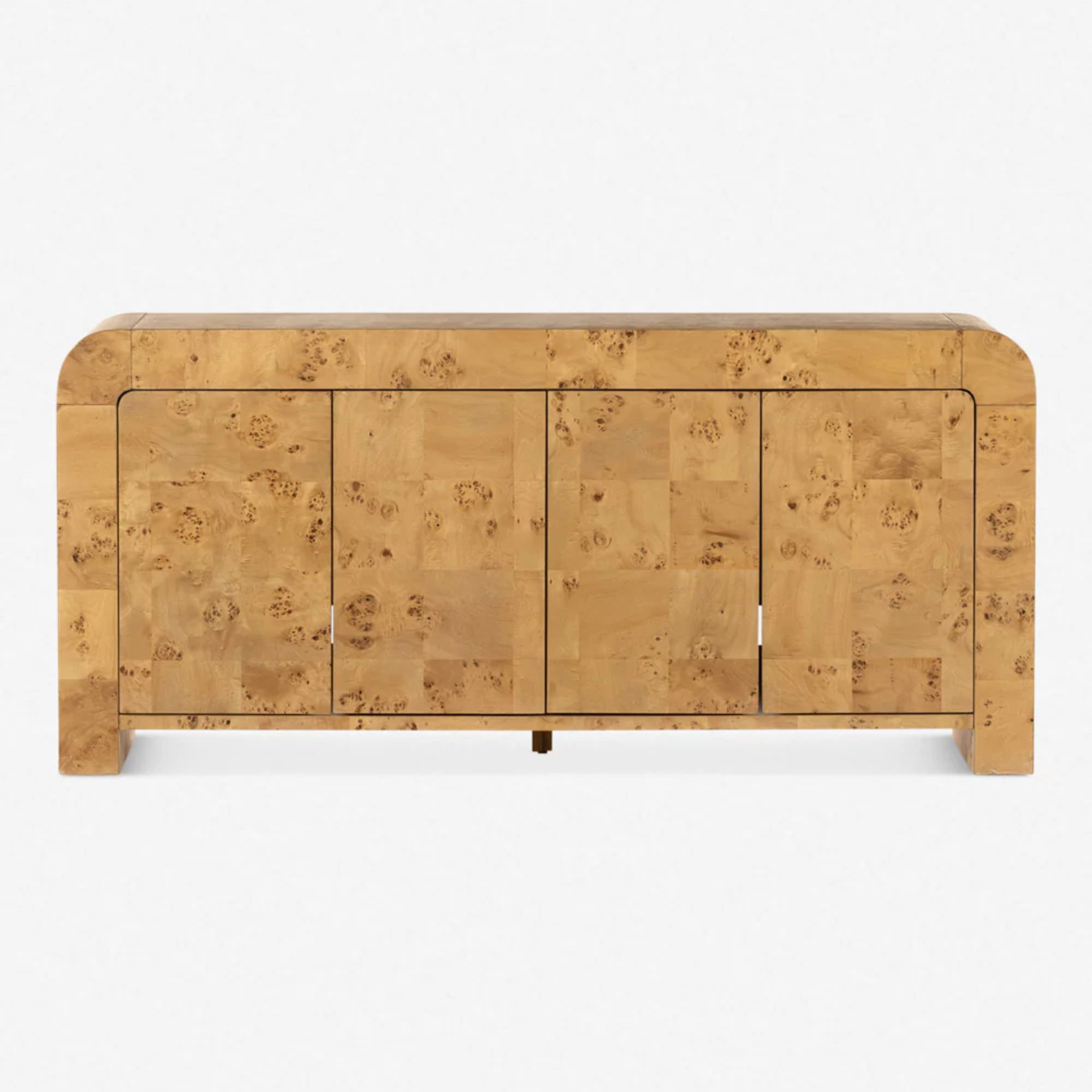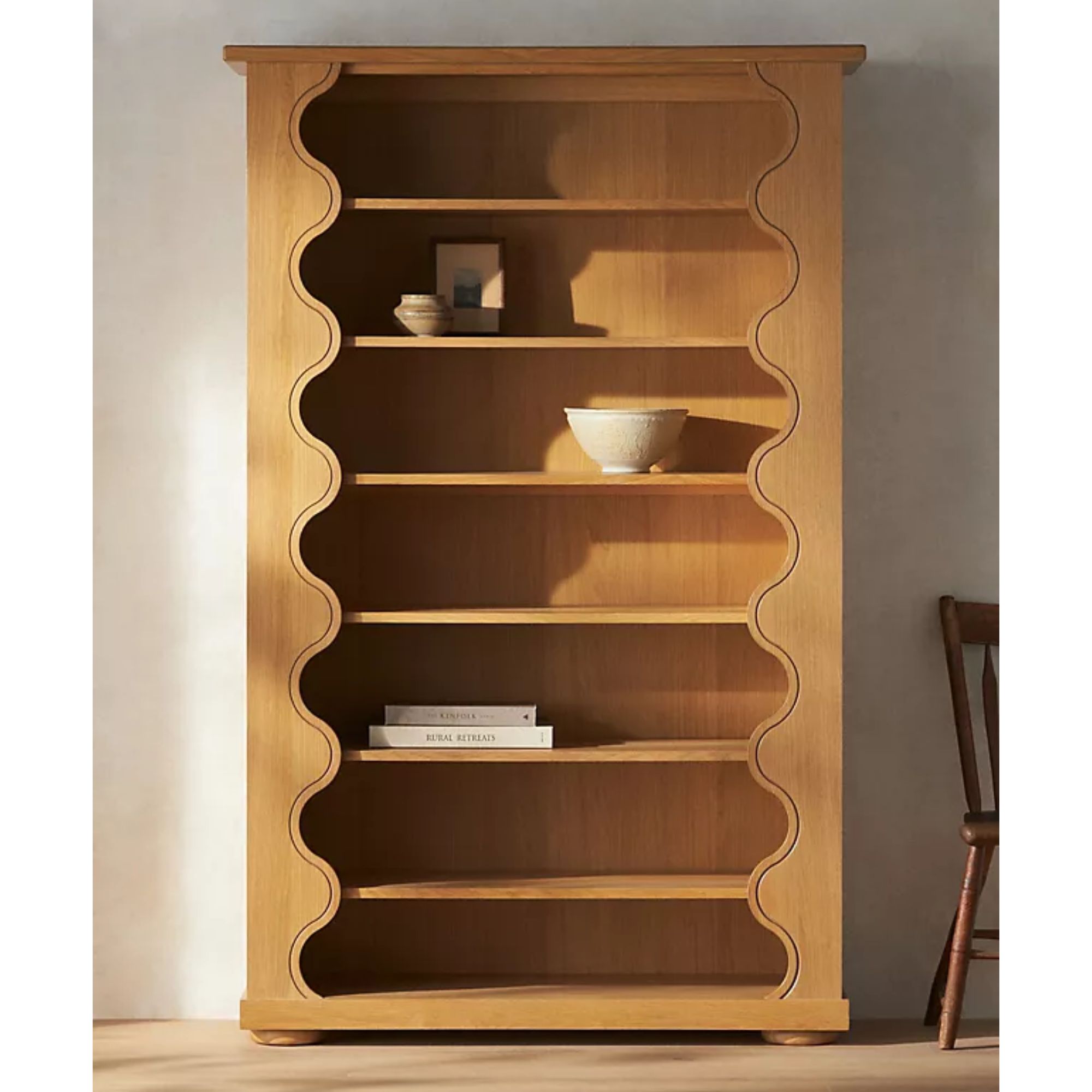How do you know when to go with built-in or freestanding furniture? This interior designer provides a masterclass in style vs storage
It's a big decision, so how do you know what is best? Here, interior designer Rebecca Constable shares her expert advise


When it comes to furnishing your home, there are two ways to go: built-in vs freestanding. Both have their merits, but how do you know which to choose?
Fitting out those underutilized nooks, crannies, and alcoves in your home requires a little extra thinking than just simply purchasing a couch or cushion. And just like with all major purchases in your home, you want to ensure you nail the size, shape, and scheme before heading to check out.
As London-based interior designer Rebecca Constable took to Instagram to explain, there are a few things to weigh up before making any big decisions on your storage ideas. To help you understand when to go with built-in or when to let a space breathe with something freestanding, we spoke with Rebecca to pick her brains further and get into the nitty-gritty of this debate.
A post shared by Rebecca Constable Design • Home Interiors (@rebeccaconstable.design)
A photo posted by on
In her Instagram post, Rebecca shares a few points to ponder when deciding which offers the best fit and feeling for a room.
'At some point, when you’re designing your home you will come across the question as to whether to use built-in joinery or freestanding furniture,' Rebecca tells H&G.
'There is no right or wrong answer. The decision will always be a personal one that depends on how you use the space and what your needs are. But there are a few things to bear in mind when considering your options.'
Each option offers its own set of advantages and things to consider, making the decision a crucial one in defining the aesthetics and functionality of your space, no matter what room it is.
Design expertise in your inbox – from inspiring decorating ideas and beautiful celebrity homes to practical gardening advice and shopping round-ups.
Built-In Joinery

Of course, the main advantage of built-ins is storage. The beauty in built-in or custom joinery, cabinetry, and furniture all lies in its ability to marry form and function for a much sleeker and tidier appearance.
Handmade joinery can be completely customized to whatever it is that you’re storing, Rebecca notes via Instagram. You can design your storage to perfectly house whatever it is you need to store, utilizing every last bit of usable space.
'Built-in furniture allows you to design a piece of furniture that fits perfectly in your space, regardless of any strange angles in your room or how wonky your walls are,' says Rebecca. 'It’s fantastic if you have something really specific you want it to display, be that a beautiful sculpture or as a way to stylishly hide the TV.'
'You can design it to your exact requirements and create something that is totally unique and works perfectly for you,' adds Rebecca. Making it an ideal choice for small living room ideas or irregularly shaped rooms. By customizing pieces to fit the contours of your home, bespoke furniture maximizes space to create a more efficient layout.

Your decision will be heavily influenced by your interior design style. Suppose you're looking to create a more cohesive and tidy aesthetic. In that case, built-ins will allow you to design something that seamlessly blends into the architectural details of your home (like a fireplace alcove) while providing somewhere to hide everything away – including unsightly cables and WiFi boxes.
Built-ins bring a more contemporary sensibility to a space and can be custom-fitted around your television, book collection, or even as a simple catch-all for clutter. But that doesn't mean they can't feel traditional. Cornices, molding, and trims can all be added to give your storage a more decorative effect.
Ultimately, it all boils down to the versatility in creating something unique to you, and how you want your furniture to look and feel. So don't be afraid to experiment with bespoke colors and statement hardware.

Built-ins aren't just great living room storage ideas - custom pantry ideas are a dream in the kitchen, while bespoke wardrobes are a godsend in the bedroom, built-in storage can work wonders in a bathroom, and don't forget to consider your home office, too.
The key thing to note is that once you've installed some custom cabinetry, it is nearly impossible to remove it.
'Unfortunately, the downside is that once it’s in you can’t move it and you can’t take it with you if you move house,' advises Rebecca. 'And because it’s often quite expensive it’s not the best option if you think the requirements of the room might change in the future or if you’re renting,' she adds.
This is why it’s important to carefully consider and plan built-in furniture so that it will stand the test of time.
Freestanding Furniture
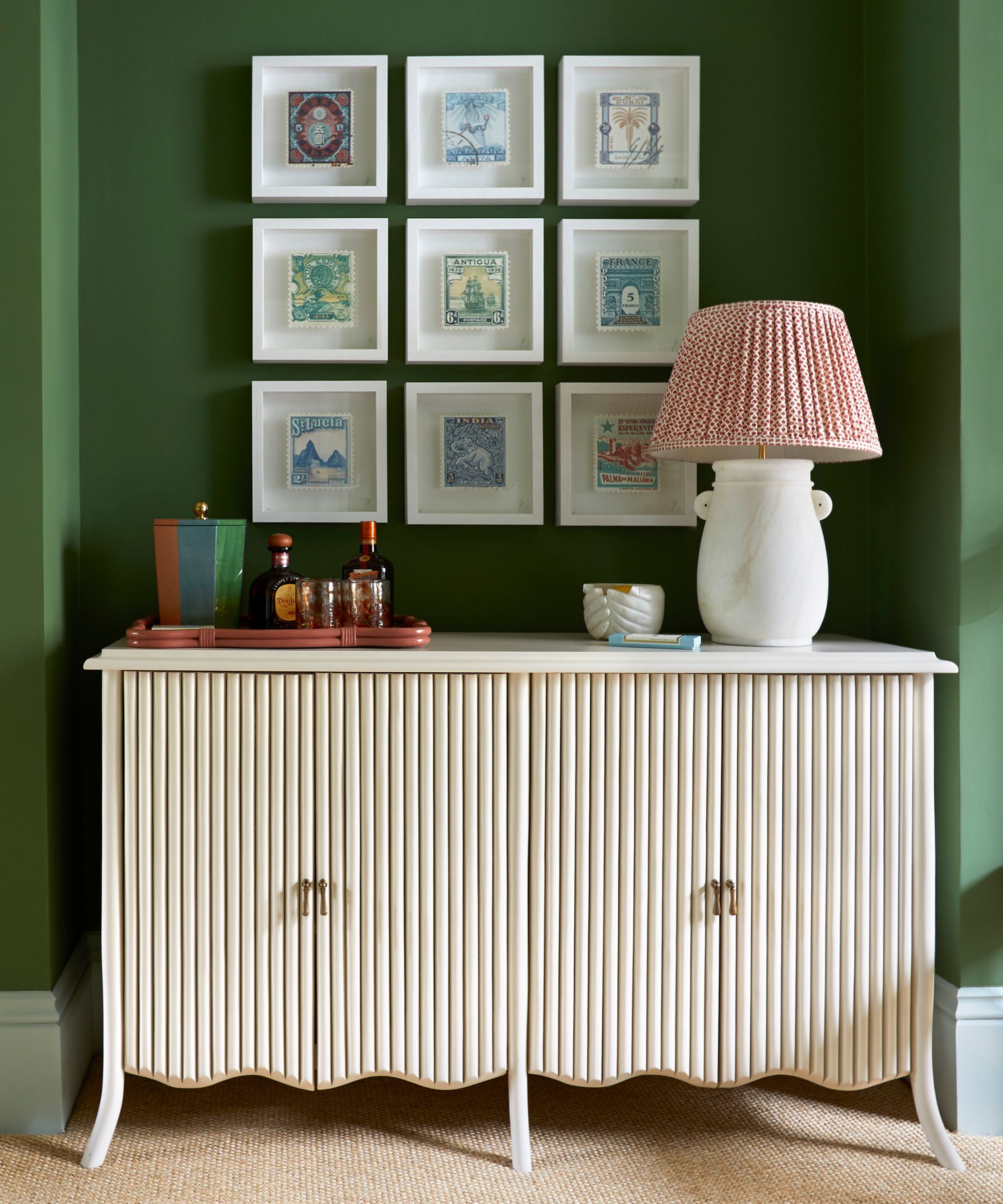
The first (and probably the most obvious) point to make is the flexibility that comes with standalone furniture pieces.
'Freestanding furniture, on the other hand, allows you to be more flexible with your room,' suggests Rebecca. 'You can move pieces around as your needs change, sell it if it no longer works for you, or take it with you if you move home.'
Furniture pieces can be moved, repurposed, and upcycled over time so that they can grow with you and your family as your needs and tastes change. A simple restain or paint of a cabinet or sideboard can be all a room needs to update a scheme.
As Rebecca said over on Instagram, the perfect piece will make a home feel like it has grown and evolved over time, rather than pulled together all at once. Something that custom carpentry might fail to do, as it tells less of a story and can be less of a transitional style.

'You can pick up beautiful pieces of freestanding furniture that will add character and history to your home while also being able to pass something down to the next generation,' explains Rebecca. 'It’s also a great opportunity to find a bargain online or at an auction house.'
Sourcing and decorating with vintage is the best way to add character and charm to a home and create that transitional design balance of old and new. The vintage furniture trend that works best for your home will depend on your style and space. For example, if you're looking for something sleek and mid-century modern, a classic Ercol or GPlan piece will sit beautifully. Whereas if you have the space, something more ornate and heavier in stature can be a statement piece of storage – and vintage rattan or bamboo will be right at home in a California casual design.
'Of course, the downside is that finding the right piece for the right place can take a long time,' Rebecca considers. 'Especially if you have very specific requirements, so you could be hunting for a while, or worst case it just might not exist. '
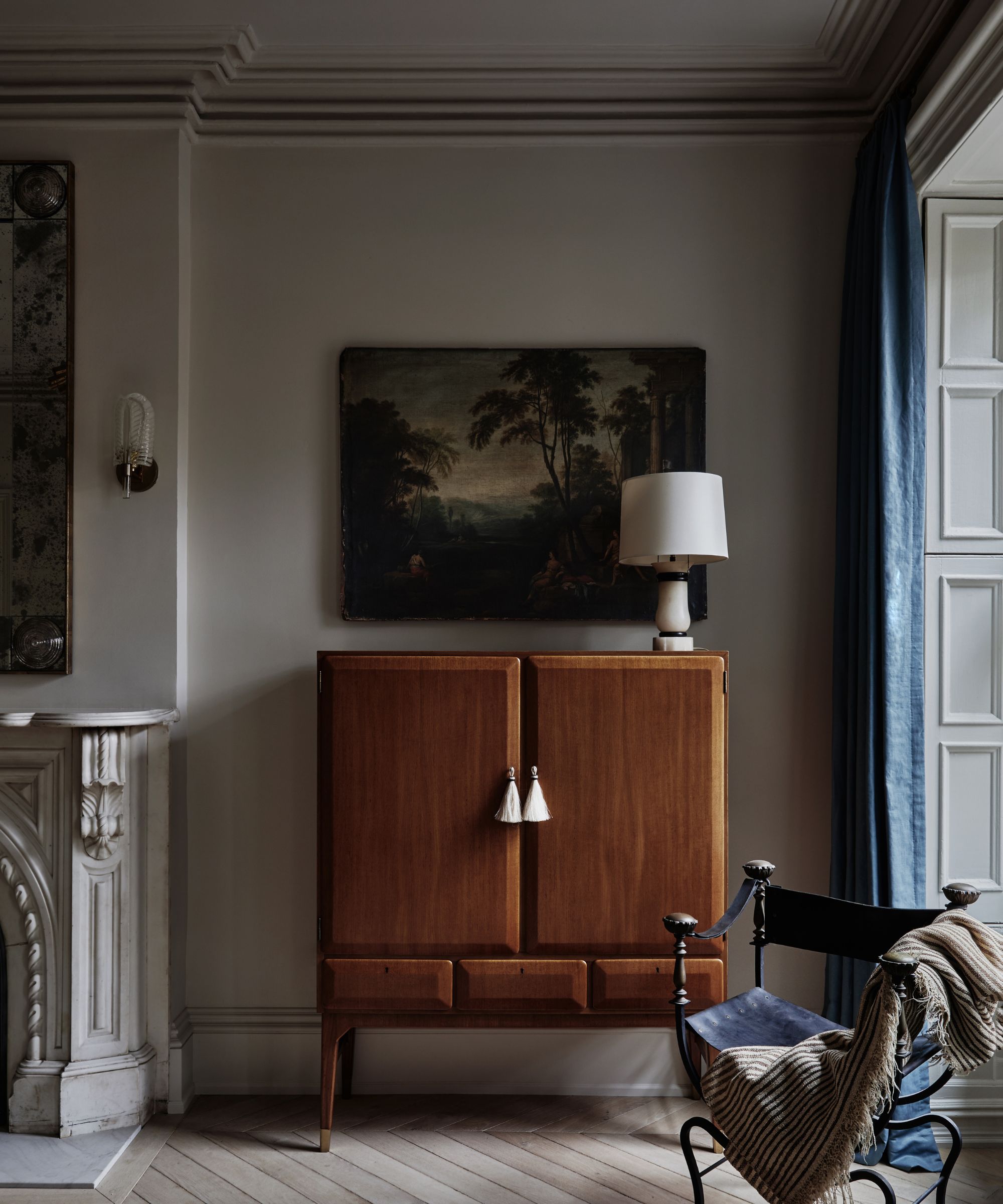
The biggest pro of freestanding furniture is that, unlike floor-to-ceiling cabinetry, a curated and well-sourced single piece allows breathing space in a room.
While we would all benefit from more storage wherever we can fit it in – it is the key to a clutter-free home after all – but if every spare wall of every room in your home is built-in and fitted with doors, it can feel imposing and overwhelming.
Not only that, but it robs us of the opportunity to create considerate vignettes and styling moments. Small cabinets or slim console tables are great for alcoves when styled up with a lamp or vase, and can serve as a versatile piece for hosting – anyone for a home bar? Plus, you can then get to work with your wall decor ideas.
'There is no right or wrong use of either so it’s a decision that you need to make based on your personal needs, your home, and preference,' concludes Rebecca. Ultimately, the decision should align with your lifestyle and design goals, ensuring that you create a space that is both beautiful and practical.
So, if you find yourself faced with an empty alcove, corner, or wall and are looking at the best options to create some storage, hopefully, you can take this advice away and make a better, more design-focused decision.
Built-in furniture offers a whole host of merits, including maximized space, tailored customization, and a streamlined aesthetic. However, it's essential to note that it also can provide limited flexibility and higher upfront costs. Freestanding pieces, on the other hand, take up less space in a room, giving you more opportunities for styling and accessorizing, and can be moved, upcycled, and sourced relatively cheaply. It's all about finding the option that works for your style and your requirements.
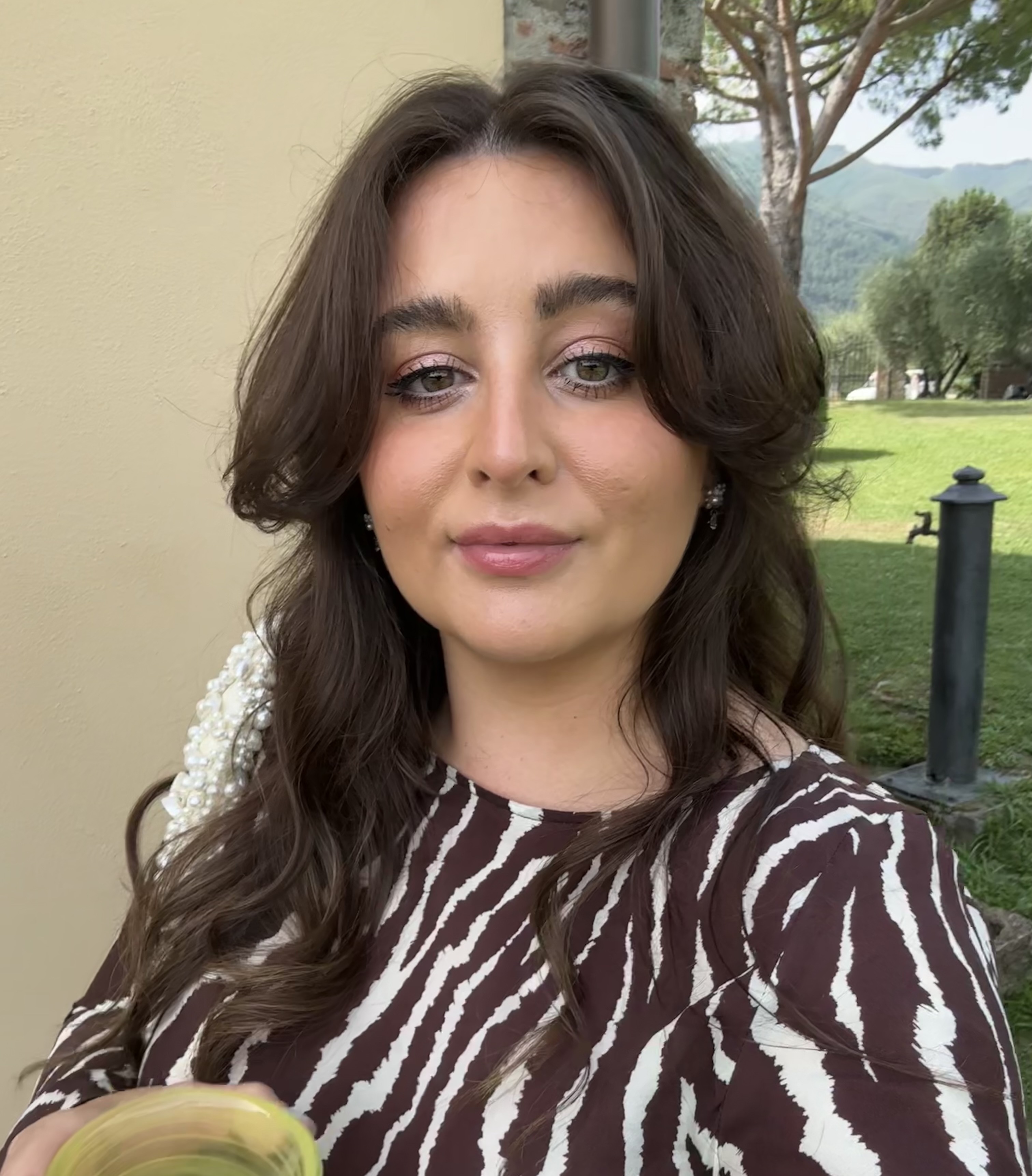
Charlotte is the style and trends editor at Homes and Gardens and has been with the team since Christmas 2023. Following a 5 year career in Fashion, she has worked at many women's glossy magazines including Grazia, Stylist, and Hello!, and as Interiors Editor for British heritage department store Liberty. Her role at H&G fuses her love of style with her passion for interior design, and she is currently undergoing her second home renovation - you can follow her journey over on @olbyhome
